15 of the wildest animal specimens I saw hidden underneath one of the world's largest natural history museums
Abby Tang,Clancy Morgan

Jars of embalmed snakes at Chicago's Field Museum.Clancy Morgan/Insider
- I've visited the Field Museum for 21 years and finally got to tour one of its hidden collections.
- Researchers preserve and store 11 million wet specimens in the basement.
The Field Museum in Chicago is home to around 40 million specimens and artifacts — but only 1% are on display.

A jar of embalmed frog specimens at Chicago's Field Museum. Clancy Morgan/Insider
I've been visiting the museum since I was 9 years old, but I've never seen its hidden collection of 11 million wet specimens until now.
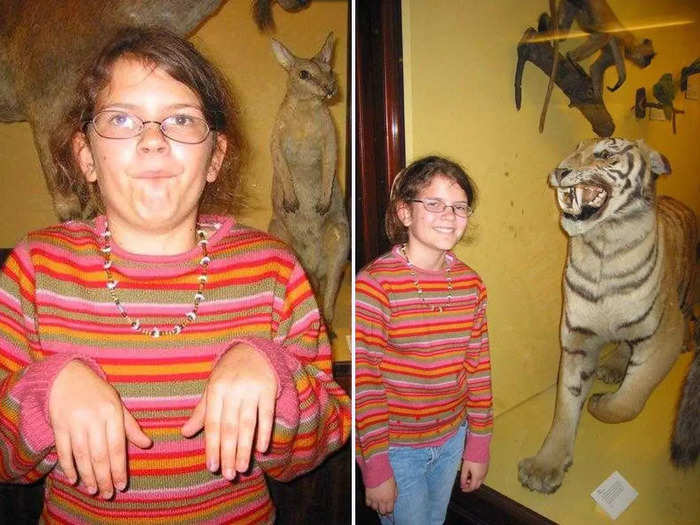
Insider producer Abby Tang visits Chicago's Field Museum in 2001. Myles Tang/Dad
It's primarily scientists allowed to access the collection, so it was a real treat to browse the stacks of odd animals as a visitor.
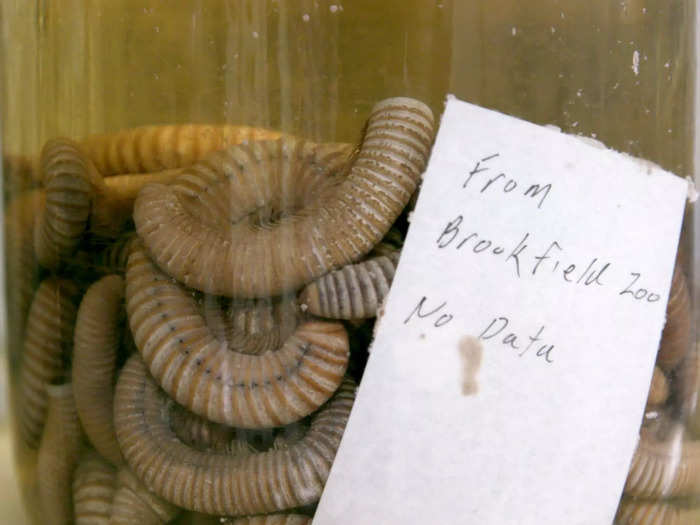
A jar of embalmed animals at Chicago's Field Museum. Clancy Morgan/Insider
Researchers embalm animals and store them in ethanol for future research. It's the closest they can get to keep a living zoo on hand.
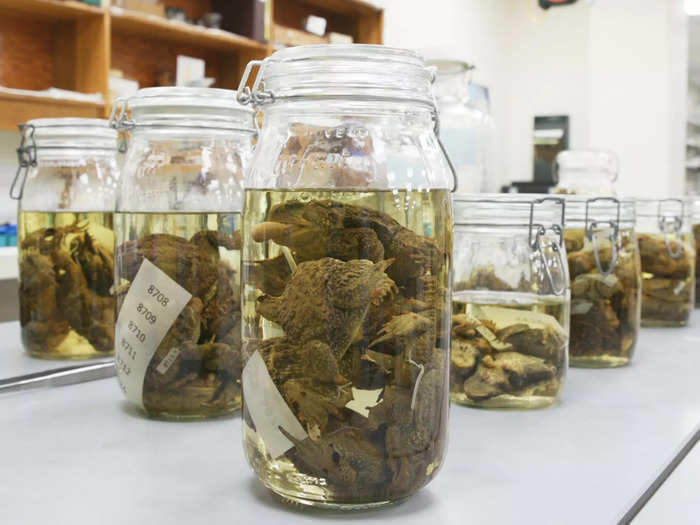
An array of embalmed frogs in jars at Chicago's Field Museum. Clancy Morgan/Insider
Since wet specimens are kept in highly-flammable alcohol, the ceiling over the collection is explosion resistant to protect the museum.

The blast ceiling above the wet specimen collection at Chicago's Field Museum. Clancy Morgan/Insider
An ideal alcohol ratio of 70% keeps specimens as true to life for as long as possible. This shielded worm lizard is almost 200 years old and hasn't changed much.
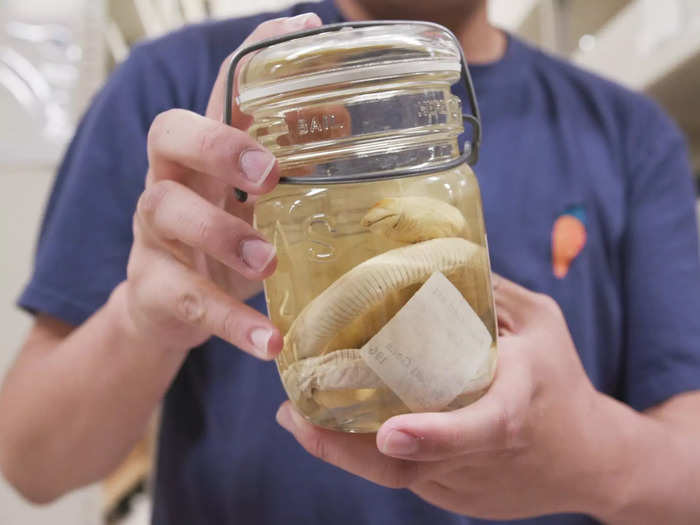
An embalmed shielded worm lizard specimen at Chicago's Field Museum. Clancy Morgan/Insider
I got the chance to see Assistant Collections Manager Josh Mata add a new specimen to the collection — a female Komodo dragon.
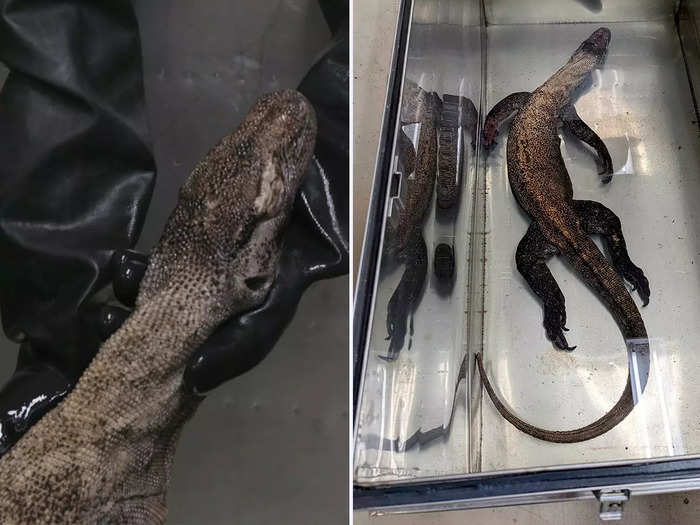
A newly embalmed Komodo dragon specimen at Chicago's Field Museum. Clancy Morgan/Insider, Abby Tang/Insider
It takes weeks to prepare a large Komodo dragon. She joined two other female dragons in a custom-made tank filled with alcohol.
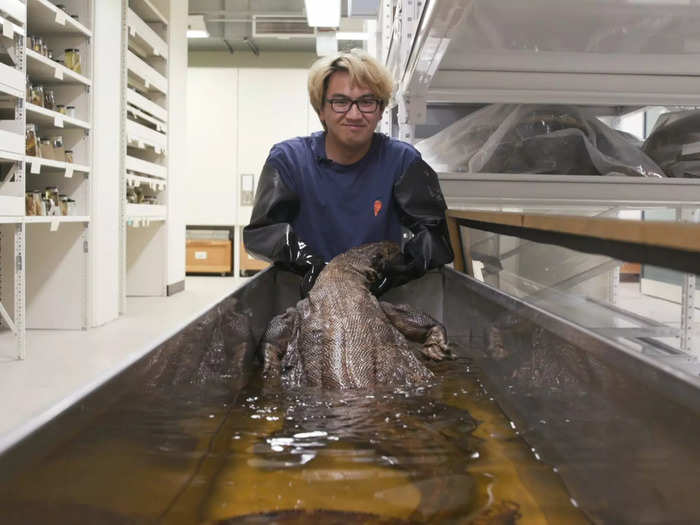
A second embalmed Komodo dragon at Chicago's Field Museum. Clancy Morgan/Insider
Over time, leaching debris and fatty oils from the specimen turn the alcohol amber, but the color doesn't affect the quality.
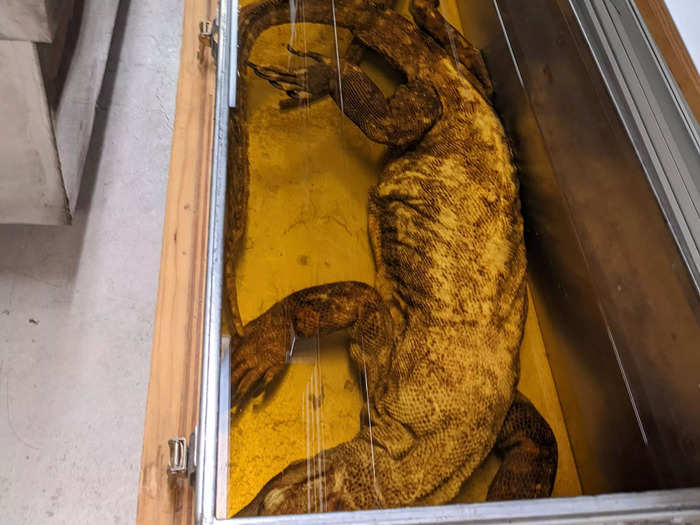
An older embalmed Komodo dragon specimen at Chicago's Field Museum. Abby Tang/Insider
Chinese and Japanese giant salamanders fill another tank. Thanks to the salamanders' genus, andrias, Josh calls this extra smiley one "Andre."
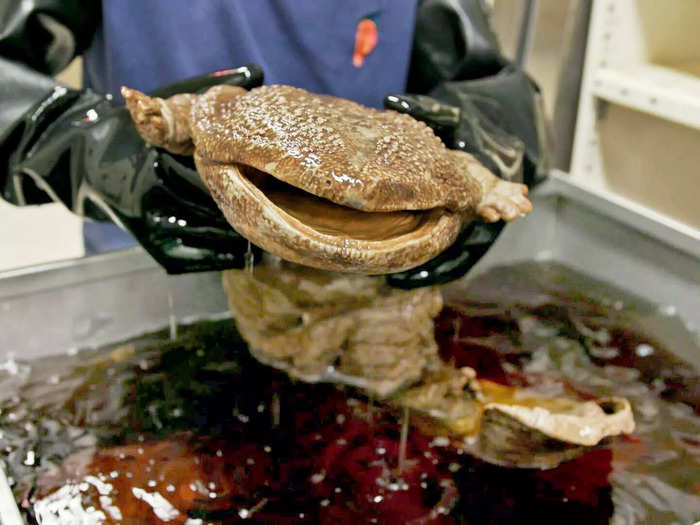
An embalmed Japanese giant salamander specimen at Chicago's Field Museum. Clancy Morgan/Insider
This hammerhead bat's huge nose makes it perfect for wet preservation. If its skin dried out, it would be much more difficult to study its schnoz.
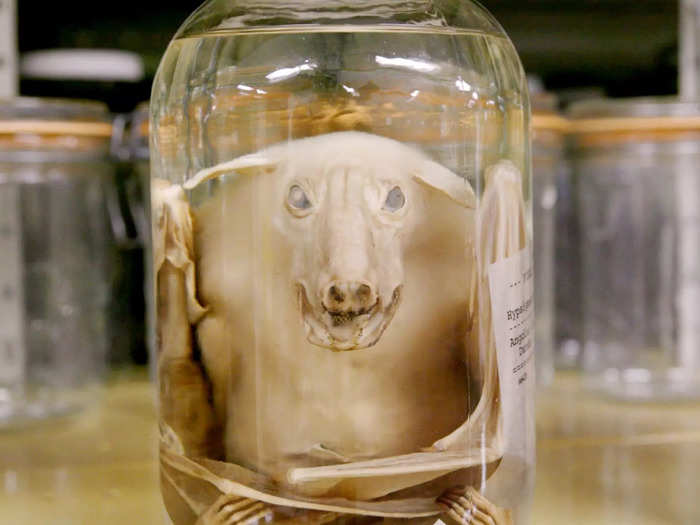
An embalmed hammerhead bat specimen at the Chicago Field Museum. Clancy Morgan/Insider
Most specimens in the wet collection are kept looking as life-like as possible, but these altered fish serve a specific purpose.
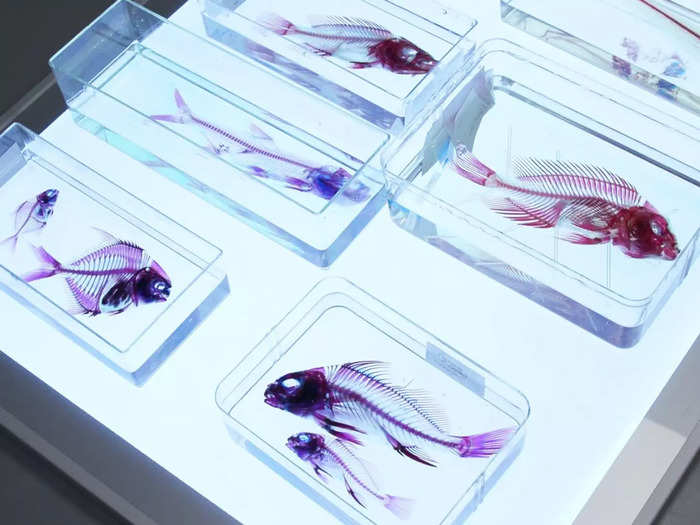
Diaphonized fish specimens at Chicago's Field Museum. Clancy Morgan/Insider
When researchers want to look at the skeleton of small fish, they'll clear the tissue and dye its cartilage and bones, a process called diaphonization.
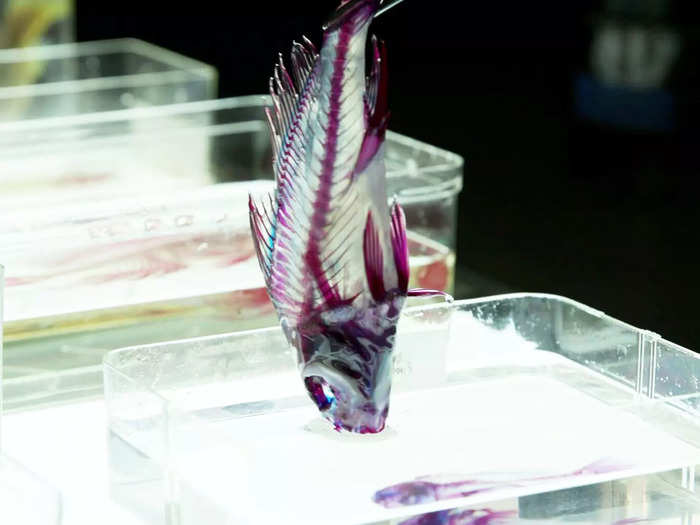
Diaphonized fish specimens at Chicago's Field Museum. Clancy Morgan/Insider
Many specimens are one-of-a-kind. This endangered Ryukyu black-breasted leaf turtle is alone in the collection; the museum will probably never get another.
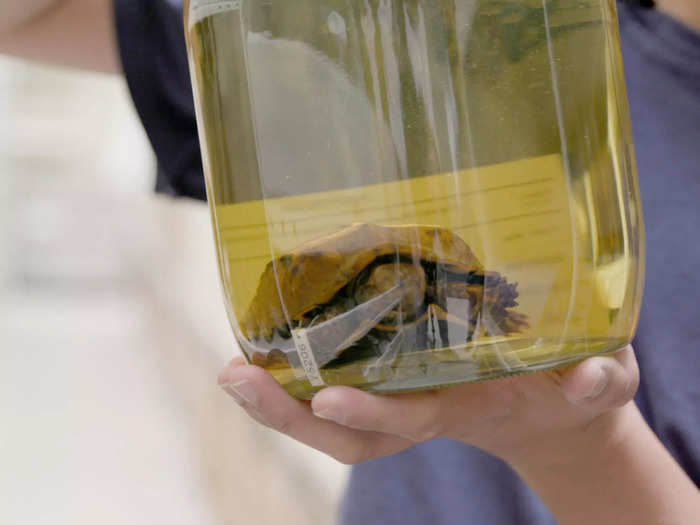
An embalmed endangered Ryukyu black-breasted leaf turtle at Chicago's Field Museum. Clancy Morgan/Insider
The coelacanth is more closely related to humans than it is to most other fish. Scientists thought it went extinct 66 million years ago, but the species was discovered very much alive in 1938.
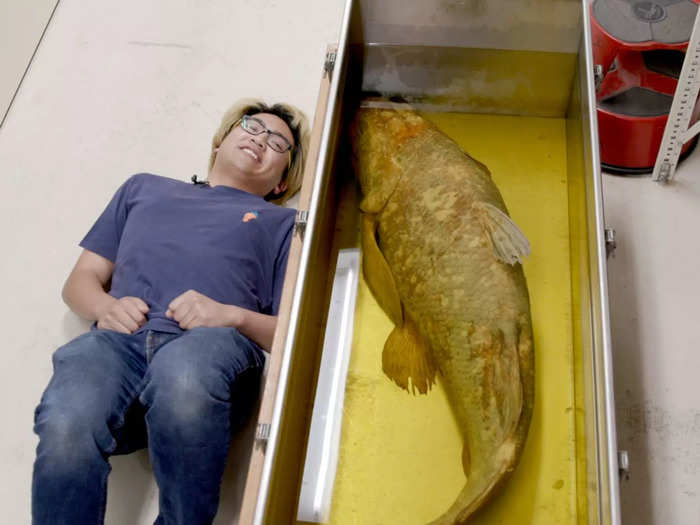
An embalmed coelacanth specimen at Chicago's Field Museum and Josh for scale. Clancy Morgan/Insider
Even abundant specimens like common water snakes have some interesting features. Those pale pink lumps are the snake's two penises and have been preserved for easy identification.
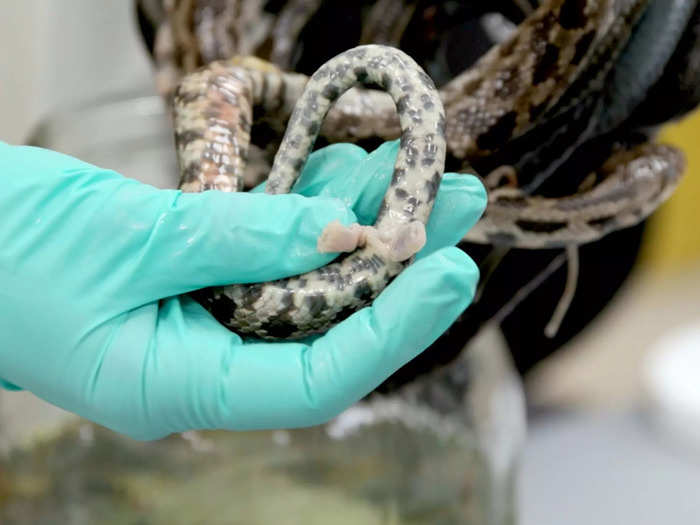
The hemipenis of an embalmed fox snake at Chicago's Field Museum. Clancy Morgan/Insider
And if species-specific collections get too big, the museum might consolidate them. You're looking at 883 frogs, all in one tank.
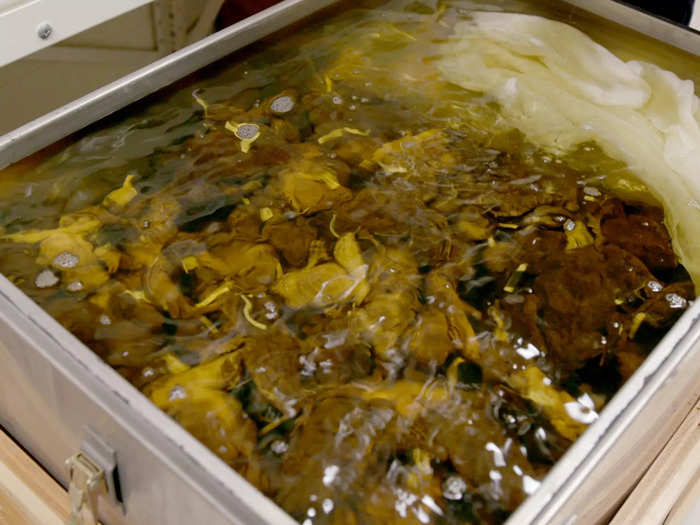
A tank of 883 embalmed frogs at Chicago's Field Museum. Clancy Morgan/Insider
When researchers want to study a specific frog, they have to go through them one by one.
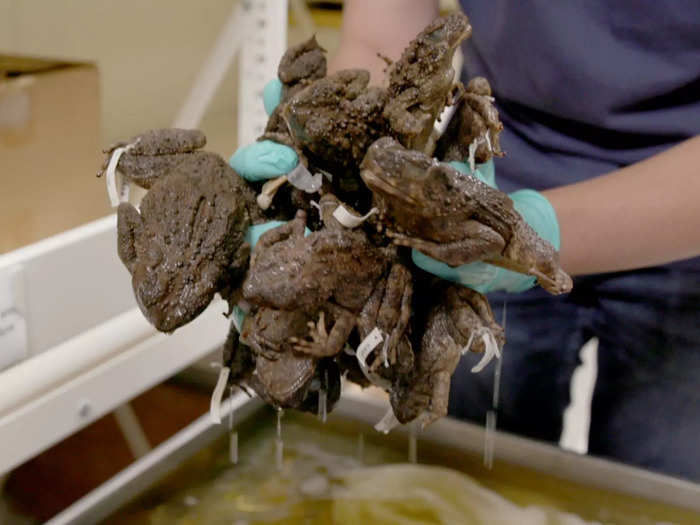
A tank of 883 embalmed frogs at Chicago's Field Museum. Clancy Morgan/Insider
The museum even keeps some valuable specimens under lock and key. This rare spider-tailed horned viper was used to describe a brand-new species.
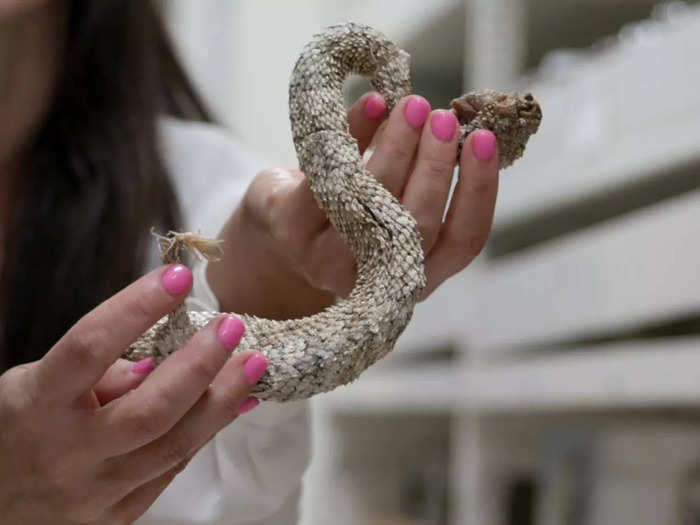
An embalmed spider-tailed horned viper specimen at Chicago's Field Museum. Clancy Morgan/Insider
On the other hand, the specimens in this tank are ambassadors for the rest of the collection.
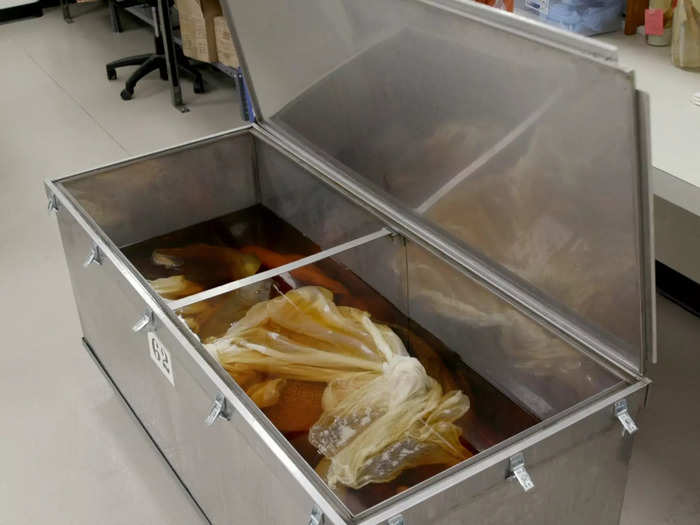
A tank full of embalmed example specimens for tour groups at Chicago's Field Museum. Clancy Morgan/Insider
These are shown to private tour groups as samples of the wild things at the museum. Like this bonnethead shark, the only known omnivorous shark species.
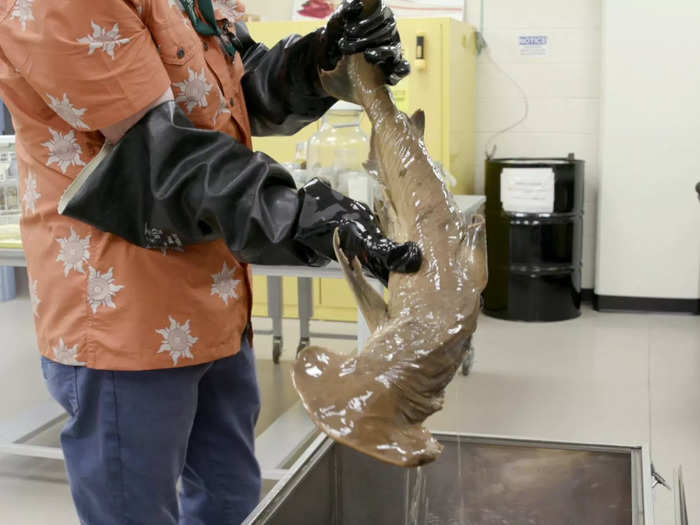
An embalmed bonnethead shark specimen at Chicago's Field Museum. Clancy Morgan/Insider
The tank also contains electric eels, which aren't actually eels but are a type of knife fish. Don't worry, they can only shock you when alive.

An embalmed electric eel specimen at Chicago's Field Museum. Clancy Morgan/Insider
These huge catfish are part of the doradid family, also known as talking catfish or thorny catfish, thanks to the bony, sharp lumps on the fish's side.
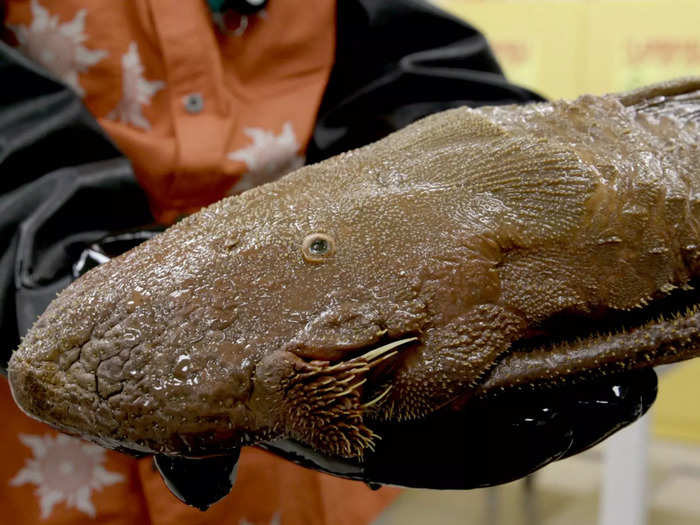
An embalmed Amazonian catfish specimen at Chicago's Field Museum. Clancy Morgan/Insider
There are some downsides to the wet preservation method. In life, this lancet fish looks like it's covered in chrome. But alcohol stripped it of that vibrancy.
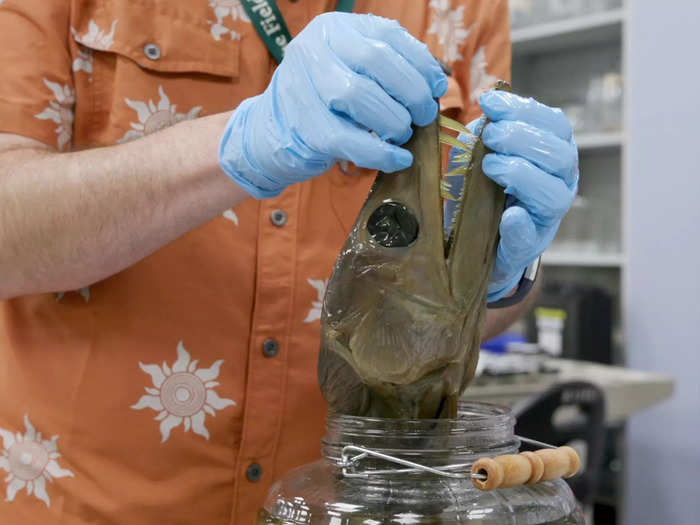
An embalmed lancet fish specimen at Chicago's Field Museum. Clancy Morgan/Insider
I still love visiting the Field Museum to see old mainstays like Sue the T. rex, but going behind the scenes is something I'll never forget and hope to do again.
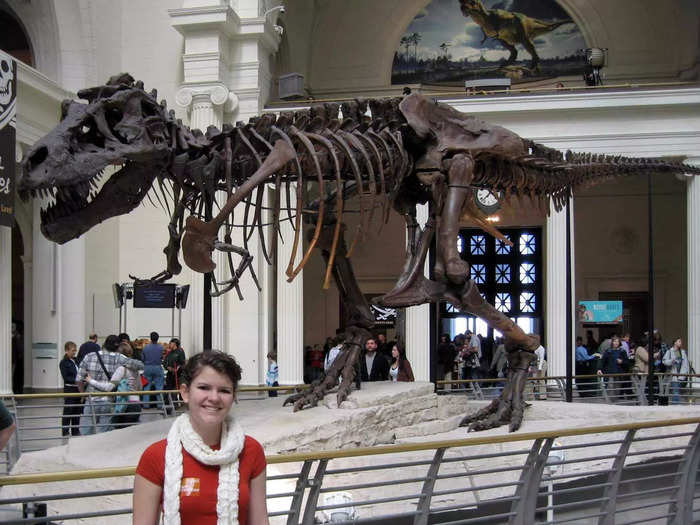
Insider producer Abby Tang visits the Field Museum in 2009. Myles Tang/Dad
Though it could take a while to get through all 30 million other specimens and artifacts hidden away underneath the museum.
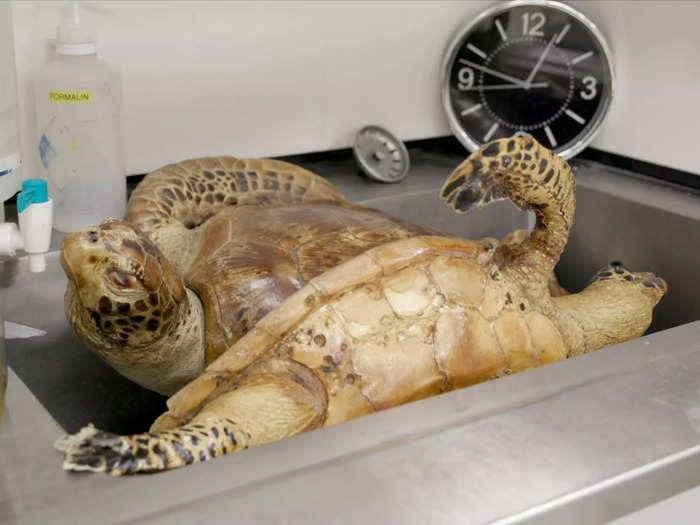
Two preserved sea turtle specimens in a sink at Chicago's Field Museum. Clancy Morgan/Insider
Popular Right Now
Popular Keywords
Advertisement